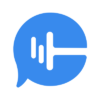Call tracking has evolved and become an essential tool in businesses marketing tech stack.
But how did we get here? And what comes next? Read on and find out.
Advertising before call tracking was like shooting arrows in the dark and hoping you hit your target. When customers would call, businesses would simply ask, “How’d you hear about us?”
But most people aren’t very good at remembering exactly which billboard, ad, or TV commercial prompted their phone call.
So, most businesses – and the agencies overseeing the advertising for their customers – had no reliable way to see how ads were performing.
Fortunately, call tracking has come a long way since those days and with it, your company’s ability to know how your ads are performing.
Here are four of the ways call tracking has changed, as well as what this means for your business today and in the future.
1. Call Tracking Is for Every Business, Not Just Big Business
Initially, call tracking solutions required specialized hardware and extensive support infrastructure. This made them affordable only to major enterprises with large budgets.
With the arrival of cloud computing and Voice over Internet Protocol (VoIP), which eliminated the need for specialized hardware and infrastructure, it became possible to develop a more affordable call tracking solution – one that could meet the needs and budget of agencies and small and mid-size businesses (SMBs).
CallRail was one of the first call tracking services geared toward SMBs.
“Back in 2011, there was no one out there making call analytics accessible to everyone, and nothing existed that was tailored to the specific needs of small businesses,” says Andy Powell, co-founder and CEO of CallRail.
Designed under a self-service model to keep it affordable and accessible to agencies and SMBs, CallRail’s solution offered free trials and straightforward onboarding. Teams can quickly and easily set up solutions with no need for an extensive back-and-forth with a salesperson.
Kevin Minelli, the CEO/founder of Eruptr, a leading marketing agency serving major hospitals and healthcare organizations (and one of CallRail’s first customers), describes just how easy it is to use: “You can learn as you go, and it’s easy to scale and enhance it as you grow. If you’re an agency like us with 50 to 70 clients and you need to handle thousands of phone calls, you’ll find it works great.”
2. Call Tracking Evolves From Tracking Calls to Delivering Insights
When cloud-based call tracking solutions were first introduced, they could do little more than record how many calls an individual advertisement or campaign generated and how long they were.
For marketers, the growth of digital marketing has changed just about everything. Not only are digital touchpoints now at the heart of the majority of customer journeys, but now it’s possible to track their effectiveness far more accurately.
As competition for popular keywords has increased and PPC pricing models have become more intricate, it’s become critical for marketers to adopt evidence-based and data-driven approaches to understanding whether or not their spending is driving the results they want.
Today’s call tracking solutions deliver far more nuanced information across the marketing ecosystem and integrate with other technologies to eliminate blind spots in your attribution efforts.
They can work together with Google Ads, Google My Business, web forms, text or chat, and other API-based integrations to give you a holistic view of where leads are coming from. They can also couple this data with detailed behavioral and demographic information about your customers.
For agencies, this translates to the ability to readily demonstrate the value they provide their clients.
“Call tracking helps our clients understand where calls are coming from,” says Ryan Amen, Director of Client Success at Nifty Marketing. “Seeing how marketing efforts translate directly into phone calls lets them see the value of our efforts. There have been so many times when clients were skeptical, and call tracking gave us proof of attribution.”
3. Call Tracking Doesn’t Just Describe – It Prescribes
Initially, call tracking was simply an attribution tool – a way of matching calls up with the ads that generated them. It’s now become crucial for analyzing how prospects engage with your organization throughout the customer journey so you can further optimize your marketing mix.
“We don’t aspire to be a platform that only tells you what happened,” says Powell. “If a business isn’t gathering data and analyzing their phone calls in conjunction with the other ways their customers are reaching them, they don’t have a complete picture of the effectiveness of their digital marketing campaigns.”
CallRail Director of Product Marketing Madelyn Wing recalls working with a marketing agency that had a client who was dead set on spending a great deal of money on Facebook and social media advertising. The agency recommended against this, believing it wouldn’t be the best use of their budget.
“After implementing call tracking and collecting just one month’s data, the marketing agency was able to show their client that the majority of their calls were coming from organic search,” Wing explains.
“Based on the data, the agency was able to convince their client that spending money on updating their blog and attracting more traffic to their website would pay off much more than spending on social media ads.”
4. Call Tracking Sets the Foundation for Omnichannel Marketing Experiences
Today’s consumer switches between devices and channels – and they do so multiple times throughout the buyer’s journey. This means that cross-channel attribution is no longer a nice-to-have. It’s essential.
Digital experiences are shaping consumer preferences and playing a growing role in facilitating the actual purchase. Consequently, tracking leads and customer experiences separately no longer gives you an accurate picture.
To maximize their effectiveness, sales and marketing teams must share knowledge and rely on a unified toolset.
Call tracking has evolved into a cornerstone technology that can bring together all your lead attribution efforts. Many of today’s call tracking solutions offer features like tagging and form tracking, as well as powerful analytics and conversation intelligence. They also integrate with an extensive and expanding array of other marketing tools and platforms.
Market-leading solutions have taken the idea of unification even further by offering a lead management and communications hub where you can access all your calls, texts, and online forms from a single inbox – including the ability to place calls and send texts – giving you a single place to keep up with all of your leads.
“When you’re dealing with medium-sized businesses, many of them work with lots of individual solutions for different things,” says Stephanie Delk of Swash Labs. “There’s a great need for a solution that ties all the other ones together — where you can see your forms and your calls and your social platforms, all in just one place.”
What’s Next for Call Tracking
Over the last ten years, call tracking has become an essential tool for agencies and SMBs. Its insights have helped them keep pace with the development of digital marketing and spend their advertising dollars wisely.
As digital marketing and technology continue to evolve, call tracking will continue to advance, as well.
“AI will be leveraged more and more heavily in the call tracking industry, especially for sentiment analysis,” predicts Lea Anne Roberts, Director of Marketing and Call Centers at Reliable Heating and Air.
Meanwhile, Growth Marketing Analyst Sully Keel at Pull-A-Part envisions that “the number of platforms required to run a call center is going to shrink,” and that more businesses will use call tracking platforms as their single solution to run a call center.
While there’s no crystal ball for what will come next, we can predict with confidence that call tracking will remain an essential part of marketing lead attribution.
To learn more about the evolution of call tracking and where it’s headed, download CallRail’s new report, Fast Track to the Future.
About the Author
CallRail is here to bring complete visibility to the marketers who rely on quality phone calls and inbound leads to measure success. Our customers live in a results-driven world, and giving them a clear view of their digital marketing efforts is a first priority for CallRail. We see the opportunities in surfacing and connecting data from calls, forms, chat, and beyond — helping our customers drive better outcomes.
Download CallRail’s new report
Fast Track to the Future
The opinions expressed in this article are the sponsor's own.




